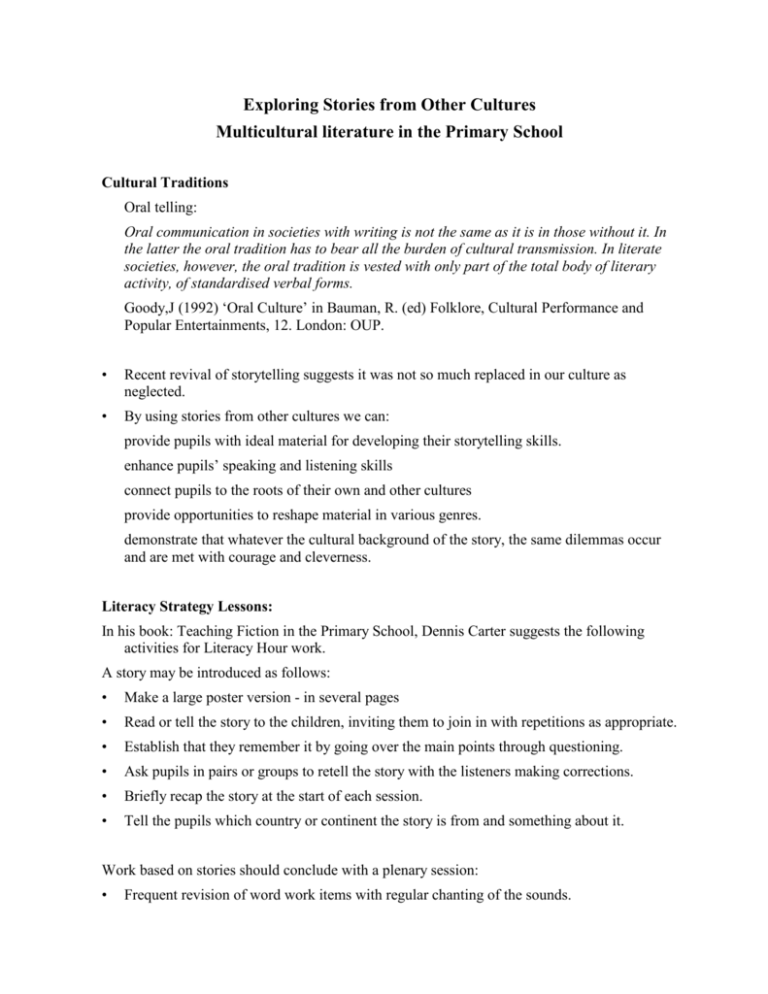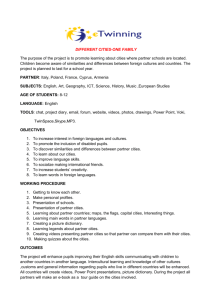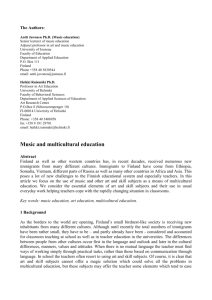Exploring Stories from Other Cultures
advertisement

Exploring Stories from Other Cultures Multicultural literature in the Primary School Cultural Traditions Oral telling: Oral communication in societies with writing is not the same as it is in those without it. In the latter the oral tradition has to bear all the burden of cultural transmission. In literate societies, however, the oral tradition is vested with only part of the total body of literary activity, of standardised verbal forms. Goody,J (1992) ‘Oral Culture’ in Bauman, R. (ed) Folklore, Cultural Performance and Popular Entertainments, 12. London: OUP. • Recent revival of storytelling suggests it was not so much replaced in our culture as neglected. • By using stories from other cultures we can: provide pupils with ideal material for developing their storytelling skills. enhance pupils’ speaking and listening skills connect pupils to the roots of their own and other cultures provide opportunities to reshape material in various genres. demonstrate that whatever the cultural background of the story, the same dilemmas occur and are met with courage and cleverness. Literacy Strategy Lessons: In his book: Teaching Fiction in the Primary School, Dennis Carter suggests the following activities for Literacy Hour work. A story may be introduced as follows: • Make a large poster version - in several pages • Read or tell the story to the children, inviting them to join in with repetitions as appropriate. • Establish that they remember it by going over the main points through questioning. • Ask pupils in pairs or groups to retell the story with the listeners making corrections. • Briefly recap the story at the start of each session. • Tell the pupils which country or continent the story is from and something about it. Work based on stories should conclude with a plenary session: • Frequent revision of word work items with regular chanting of the sounds. • Pupils to practice retelling the story in their own words and reading parts of it, paying due attention to punctuation. • Plays and dances to be rehearsed and performed to audiences, sometimes invited from other classes. Musical pieces to be performed as part of these occasions. • Art to be exhibited in classroom or corridor galleries. • Writing to be anthologised and put on display. Introduce tale from Jamaica: “Clever Anansi and Boastful Bullfrog” and a story from Wales: “King March’s Secret/ Clustiau March”. Pair work: self study questions: Choose a story based on a multicultural theme. Using these questions as your starting point, discuss the importance of introducing texts which encourage critical thinking. • Does your story challenge the reader? • Are customs, lifestyles and traditions presented in a manner which explains their value, meaning and role in people’s daily lives? • If this story were used by children from the community portrayed, would it enhance their self image? • Do the representations portray people from the South in active and dominant roles? Is the story up to date in its portrayal of this society? • Do you intend to use this story with Key Stage 2 pupils in the primary classroom? why?/why not? Further Reading: Frances Lincoln, Clever Anansi and Boastful Bullfrog. Anstey, S (1999) King March’s Secret, History Box, WJEC Language Unit of Wales. Carter, D, (2000) Teaching English in the Primary School. Wray, D., Medwel, J., Poulston, L., and Fox, R., (2002) Teaching Literacy Effectively, Routledge Farmer. JJC 13.4.03 Update2006



![afl_mat[1]](http://s2.studylib.net/store/data/005387843_1-8371eaaba182de7da429cb4369cd28fc-300x300.png)







